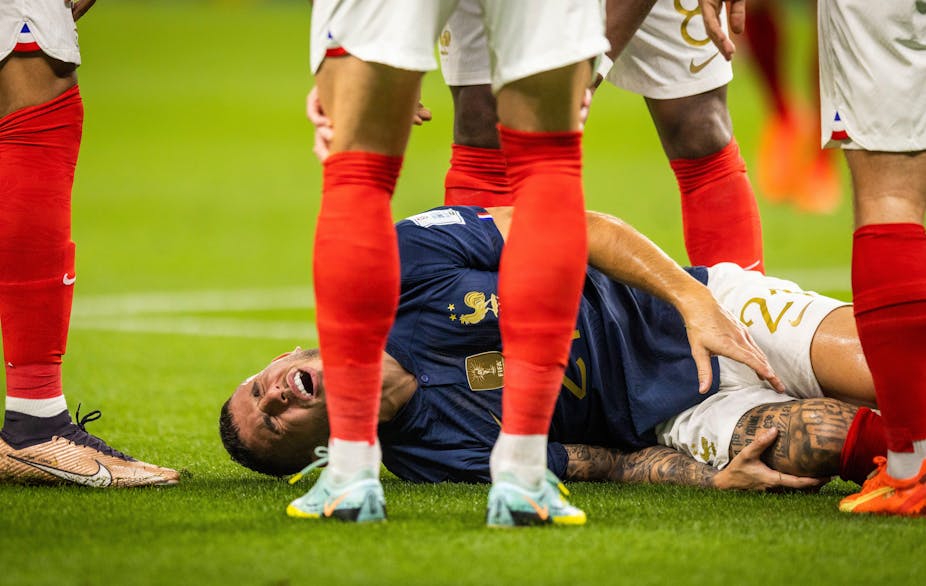The World Cup in Qatar has seen many injuries. Arsenal striker Gabriel Jesus had to have surgery on his right knee after being forced off during Brazil’s group stage match against Cameroon. And Paris Saint-Germain (PSG) players and Portugal teammates Danilo and Nuno Mendes were both unable to continue playing in the tournament after the former fractured three ribs and the latter injured his thigh.
There were even some fears that Argentina’s Lionel Messi (also a PSG player) might not appear in the World Cup final after he was seen clutching his hamstring during the semi-final against Croatia – but he has since confirmed he is fine.
With the tournament taking place in the middle of many domestic football seasons, club fans may be wondering what impact the injuries and fatigue will have on players when competitions such as the Premier League and Champions League resume.
Premier League fixtures in England restart on December 26, having been on hold for 42 days. While many of this league’s players competed in Qatar, the majority – including two of its biggest stars, Erling Haaland of Manchester City and Liverpool’s Mohamed Salah – have enjoyed a mid-season rest before resuming training with their clubs.
What does the research say?
There is a lot of research that can be drawn on to help us form an idea of how this “winter World Cup” will impact injury incidence in the Premier League and other leagues throughout Europe.
For example, players involved in the French and Argentinian teams that have successfully made it to the World Cup final may play a total of seven games in 28 days. Games played in quick succession with little recovery time have been shown to result in a greater overall risk of injury.
Other research shows that injury incidence during World Cup competitions ranges from 50.8 to 72.8 injuries per 1,000 hours. This translates to between six and eight injuries for teams who make it to the final stages. And a study across all international top-flight football activity between 2012 and 2020 found a match and training injury incidence of, respectively, 31.8 and 3.8 injuries per 1,000 hours of play.
The injury incidence in international football tournaments is consistently higher than what is observed in domestic football (23.8 injuries per 1,000 hours). But one reason for this could be cumulative fatigue, as international tournaments normally take place at the end of a long domestic season.
The greater injury incidence could also be attributed to factors such as new forms of training and match-play style that players are unaccustomed to, travel fatigue, and additional physiological and psychological strain experienced during World Cups.
The benefits of a winter break
Match-play injury incidence is commonly reported to be around ten-times higher than in training. More specifically, international match injury incidence (31.8 injuries per 1,000 hours of play) is considerably higher than domestic training injury incidence (3.4 injuries per 1,000 hours).
So the risk of injury for players not appearing in this World Cup is clearly much lower. For them, this period has replicated a “winter break”, which many leagues around the world now incorporate into their domestic seasons.
On average, European teams have a winter break of ten days. Teams who don’t have a winter break suffer a higher incidence of severe injuries – losing 303 more player-days each season, on average – compared with teams who do get a winter break. This indicates some potential positives for club teams who did not have many players in this World Cup.

On the other hand, the World Cup has enforced a much longer break from match-play for individuals not playing than the usual winter break. A period of 42 days without playing a competitive fixture – as Premier League players have experienced – is unusual for a professional footballer.
So when their season resumes on Boxing Day, matchplay may represent a “spike” in workload intensity due to the demands of games being much higher than training. Sudden spikes in workload underpin an increased risk of injury. This may lead to some non-World Cup players being unaccustomed to the nature and demands of playing matches, which may exacerbate their injury risk.

